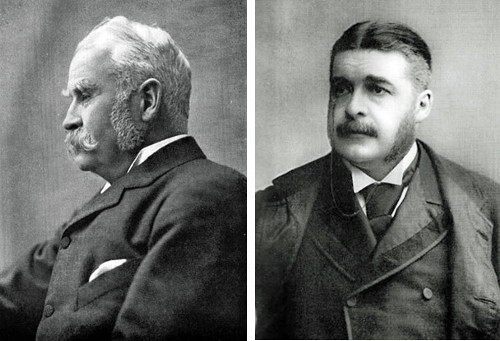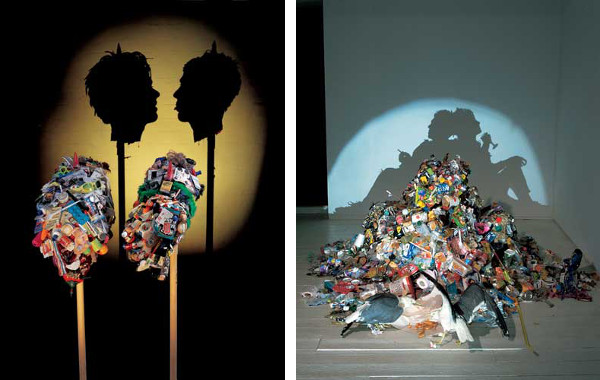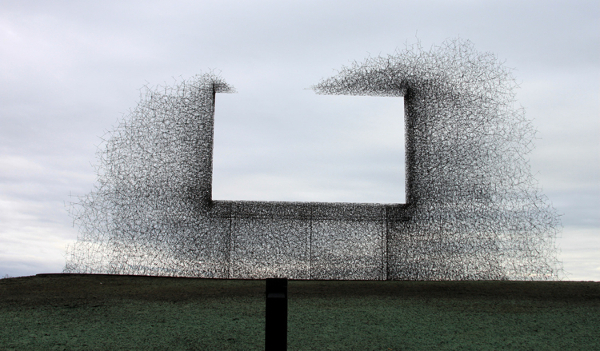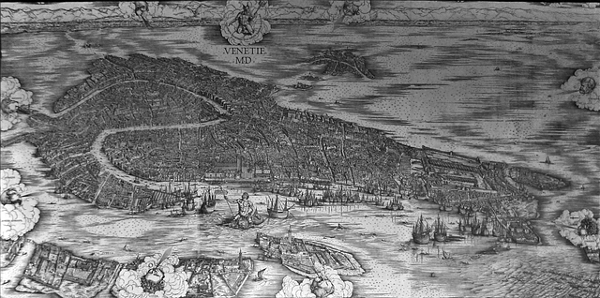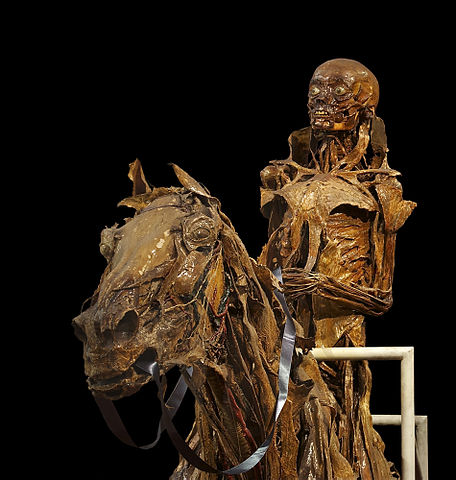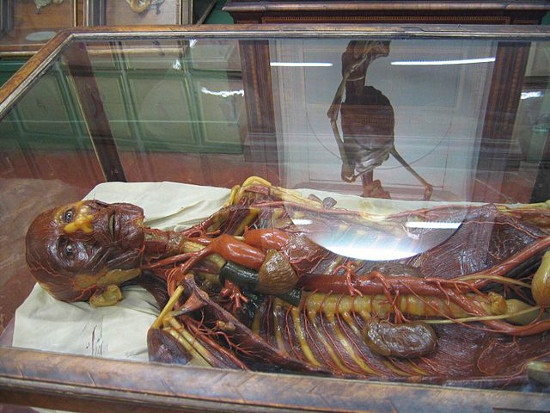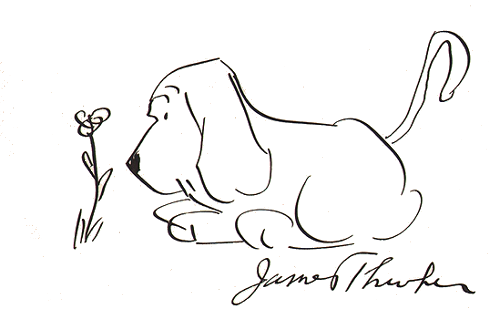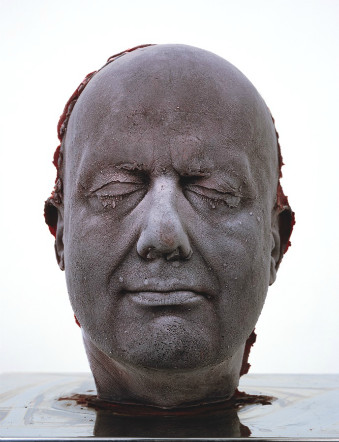
Sculptor Marc Quinn chose a unique medium for his 1991 self-portrait Self: The life-sized bust is fashioned from nine pints of the artist’s own blood, collected over a period of weeks, poured into a mold, and frozen. It sits in a transparent cube with its own refrigeration unit.
“I have come across viewers who, on seeing Self for the first time, describe a sensation akin to tingling, a kind of spinal over-excitation, or a curious shudder — that involuntary somatic spasm referred to in common speech by the phrase ‘someone walking on one’s grave,’ writes Cambridge philosopher Peter de Bolla in Art Matters (2001). “And for some these immediate somatic responses may quickly give way to a variety of thoughts associated with formally similar presentations of the human head or face: the death mask, waxwork, funerary sculpture, embalmed body, or anatomical model. When this happens, the frisson of the physical encounter rapidly mutates into a jumble of thoughts as if an impulse — call it a spark of affect — sets in motion a series of reactions that leave their trace in whatever permeable surface they encounter.”

